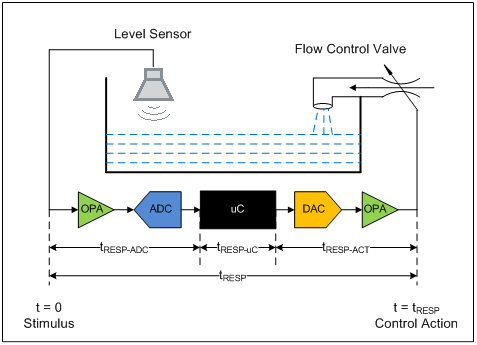This technical article was updated on July 23, 2020.
Part 1:
The objective of many typical control system applications is to effect a control action based on the status of input control variables. Some of these include position, speed, angle, level, temperature and pressure.
And for each of these control variables, you may need to optimize the design for ‘precise’ measurements, ‘precise’ control actions, and/or a fast ‘response time.’ In this series, I’ll discuss SAR ADC response times and several approaches to achieve the best results for your design.
When thinking about analog electronics:
- The ‘precision and accuarcy’ requirements of the system translate into the performance specifications (i.e. noise, linearity, etc.) desired from your analog blocks (amplifiers, references, sensors, etc.) and your mixed signal blocks (ADC, DAC, etc.)
- The ‘response time’ requirements of the system translate into the choice of host controller and the speed of your mixed signal blocks (ADC, DAC, etc.).
But let's focus on what it would take to optimize a system for the response time (tRESP). One of the more effective approaches is to budget the system response time across the various ‘non-real-time’ blocks in the design, namely the ADC, the host controller and the DAC.
- Response time of ADC (tRESP-ADC) is the time difference between sampling the analog input and having the corresponding digital code available inside the host controller.
- Response time of host controller (tRESP-uC) is the amount of time the controller takes to decide on a control action.
- Response time of DAC (tRESP-ACT) is the time difference between host controller deciding on a control action and the control action actuating at the output of the DAC.
Why a SAR (Successive Approximation Register) ADC?
The SAR architecture combines high precision with fast response time that makes it ideal for many industrial control systems applications.
If you look through any SAR ADC datasheet, you will find the throughput or speed mentioned in the specifications. Here is an example from the ADS8881 datasheet:
Then the ‘response time’ of the SAR ADC (tRESP-ADC) is simply ‘1/throughput’, right?
Well – not always! Stay tuned – in the next blog post we will learn the difference between the two parameters, and in subsequent posts, we will see how response time of a SAR ADC can be different from its throughput.


